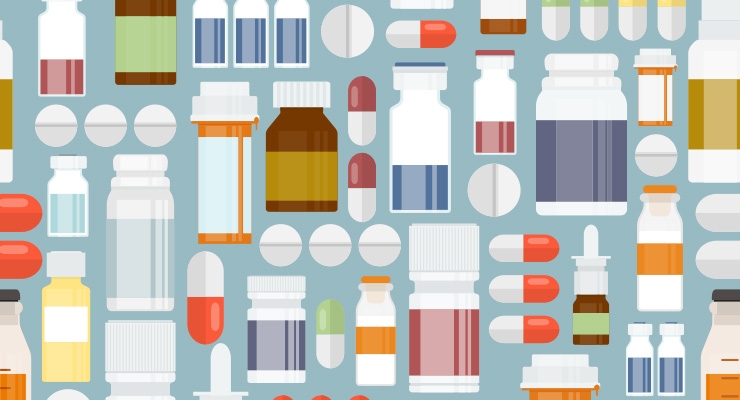Manufacturers are instituting protections throughout the supply chain
By Sean Riley, Senior Director, Media and Industry Communications, PMM
11/03/2017 – 9:00 am

The counterfeit drug market is growing rapidly, and Deloitte accountants currently value it between $75 billion to $200 billion according to data culled from Pharmaceutical & Medical Devices Trends & Opportunities in Packaging Operations. The research report from PMMI, The Association for Packaging and Processing Technologies, also says that the World Health Organization (WHO) believes that one in four medicines available in developing countries, and 50 percent of products ordered online, are bogus.
A single pill might pass through a dozen countries during the manufacturing process, creating endless opportunities for malfeasance. A chemical synthesized in China may be mixed with fillers that originated in India, packaged in Mexico, and find itself on a pharmacy shelf in the U.S.
In response to increasing drug integrity concerns, more than 40 countries have introduced track-and-trace laws to help regulate product as it passes through the supply chain. In the next 12-18 months, more than 75 percent of the world's prescription medications will be protected by legislation.
In the United States, the timeline is pretty straight forward beginning with the Drug Supply Security Act (DSCSA) enacted by Congress in 2013. DSCSA has already instituted two increases in consumer protection. In 2015 it required manufacturers, wholesalers and re- packagers to provide and/or receive pedigree for each transaction. This is commonly referred to as lot-level traceability.
By the close of 2017* manufacturers (2018 for repackagers) are required to offer serialization at the smallest sealable unit and corresponding sealable homogeneous case level with a product identifier, serial number, lot number, and expiration date.
The next two phases are the most inclusive, with wholesalers required to accept or distribute only prescription drug products that include a product identifier number by 2019 and dispensers required to receive or distribute only prescription drug products that include a product identifier number by the following year.
Finally, in 2023, DSCSA mandates the full implementation of an electronic system (aggregation) ensuring compatibility throughout all stages of distribution. Under the DSCSA, aggregation starting at the unit level will be a requirement by 2023, mandating complete product traceability from manufacturer to dispenser.
While aggregation requirements are not yet mandated, these more stringent requirements, particularly regarding aggregation and the scope and scale of reporting mandates, are already in place in numerous major foreign markets across the globe. In some instances, U.S. pharmaceutical companies have already had to comply with more stringent international requirements, placing them ahead of U.S. legislation.
Barcode technology is often the first line of defense. One dimensional bar codes are proven and easy to use, but 2D and even 3D are growing in use. Two-dimensional codes hold more information for traceability and expanded consumer engagement, while 3D offer color, the largest data capacity and an ability to encode pictures and video.
As barcodes remain the choice of the masses regarding ensuring pharmaceutical product integrity, new technologies continue to emerge. Invisible watermarks, embedded into already existing packaging and label graphics, permit manufacturers to better secure their brand without taking up valuable display space or investing in costly new bar code and graphic additions. Invisible watermarks are readable through a simple smartphone or scanner equipped with the appropriate, secure software.
Through the use of unique chemical "signatures," manufacturers can mark both their product and its packaging with a proprietary identifying taggant. These taggants have been deemed safe for human consumption, meaning that a pharmaceutical manufacturer could integrate the chemical taggant into the plastic of a bottle as well as into each pill that the bottle contains. These tags are readable through spectroscopic hand scanners that are comparable in price to traditional RFID systems.
As the Industrial Internet of Things (IoT) grows in popularity, cloud based solutions with smart labels are finding a home in pharmaceuticals. Proprietary labels acquire a unique code when placed on a package, and this code is readable with software or a smartphone App. These labels can verify a produc's authenticity and genealogy and act as a particularly effective tamper evident seal. A simple reading tracks the genealogy of the product and stores the information in the Cloud. If the label is removed or re-adhered to another package, it loses the unique code, is flagged and from then on it will scan as void.
One extreme measure that some pharmaceutical manufacturers have adopted is DNA manipulation. By editing individual strands of DNA to contain a unique, repeated sequence of nucleobases (the A, C, G, T building blocks that compose DNA), manufacturers can create a nearly impossible to replicate form of brand protection which also cannot be removed.
The unique DNA signature must be tested in a lab to be indisputably verified.
